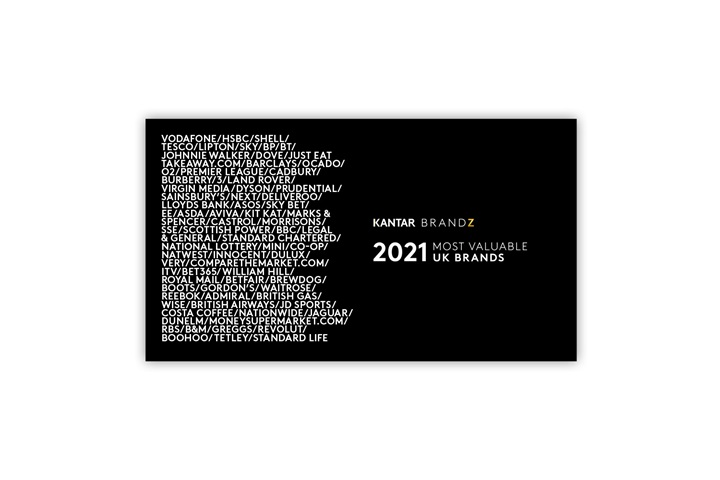From Rosser Reeves’ “USP” and Jack Trout’s entreaty for brands to “differentiate or die”, to the Ehrenberg Bass Institute’s questioning of whether differentiation can even be achieved, it seems we’ve done a 180-degree turn on the topic of difference. Take note of the proof that creating a point of difference is not only possible, but is also the key to accelerating growth.
Branding is about making your mark
Originally, perhaps even in the time of the ancient Egyptians, branding was quite literally about making your mark, usually on livestock. It has since come to mean a more figurative mark-making; if there’s anything Mad Men’s Don Draper taught us, the golden age of marketing highlighted ‘instant associations’ as the way to conquer brand growth.
The network of associations in people’s minds makes a product’s assets – verbal, visual or auditory – distinctive; these associations act as a shortcut to brand meaning. Some brands’ assets are recognisable even at a glance: Apple’s half-eaten apple and the golden arches of McDonald’s, Mastercard’s deep association with the word ‘priceless’, Intel’s three-second audio. But an instantly recognisable brand is not always the chosen one. Brand equity – the strength of a brand’s associations in consumers’ minds – is what steers people’s purchase decisions. This is why a brand must not just be famous (we all knew Thomas Cook, Topshop and Debenhams), but also Meaningful and Different.
Don’t leave it to luck
It’s vital that brands make the most of every encounter with consumers.
Our meta-analysis of growth drivers from Kantar BrandZ global data shows that brands with strong clarity (which means what they stand for is well understood) contribute 70% more to sales. Clearly, meeting consumers’ functional and emotional needs (i.e. being instantly Meaningful) offers brands a commercial advantage. But is this enough to maximise growth? The biggest success stories come from brands that are Meaningfully Different – those that stand out and then stand for something.
Ad industry legend Jeremy Bullmore once said: “People build brands as birds build nests, from scraps and straws we chance upon”. These scraps and straws are consumers’ own experiences, moments, trials, ads… all the clues that brand owners lay out in front of them.
Brand owners can’t leave this ‘nest building’ to chance. Brand building needs discipline: it needs a framework that provides focus at every stage of the journey, from defining and refining/resetting brand strategy to guiding effective development and getting implementation right.
A brand’s essence should consistently permeate and connect everything it does, always aiming to spark or kindle an emotional connection with consumers.
Tripling returns
For brands, there is a three-fold benefit to being Meaningful AND Different AND Salient.
Brands that are Meaningful meet people’s needs, and people feel emotionally connected to them. Difference contributes to perceptions that a brand is a trend setter in its category and is unique. If a brand is Salient, it comes to mind quickly in a purchase situation. When a brand has all three of these attributes, it:
- has the power to capture significantly more volume
- can command a price premium
- has much greater potential to gain value share
The industry has moved on from the ‘differentiate or die’ mantra of 30 years to one that combines Salience and Meaningful Difference. As leading authority on marketing and brand Mark Ritson notes, “Kantar has been politely proving for years that such combination is greater than the sum of its parts”.
A spotlight on Meaningful Difference
There is inalienable evidence in favour of its power.
-
Meaningful Difference gives Salience wings. Growing Salience from a position of strong equity gives three times the market share gain compared to a starting point of weak equity; marketers should, therefore, seek first to define and build Meaningful Difference.

Source: Kantar BrandZ global
-
Flipped on its head, this last argument further supports the truth: declining brands have often over-invested in Salience and neglected their Meaningfully Different brand associations. Kodak, Blackberry, Nokia, Toys R Us and IBM are some of the brands that were flying high… until they weren’t. Although decoding their demise is a complex and nuanced exercise, what they all had in common is a strong heritage and high levels of Salience. Yet their fame could not ensure their growth – or even their survival.

Source: Kantar BrandZ global
-
In fact, Kantar analysis of growth brands globally found only one quarter were able to grow from Salience alone. The other three quarters grew from working on that reciprocal relationship with consumers that leads to repeat purchasing – a focus on Meaningful Difference.
-
The ‘differentiate or die’ mantra still holds great truths. Over and over again, the biggest driver of brand growth and resilience in difficult times has proven to be Difference.

Source: Kantar BrandZ global
Ka-ching! The value of a premium
A brand’s ability to charge a premium goes hand in hand with strong equity. Consumers are consistently willing to pay more for brands they regard as Meaningfully Different. Among people who are primarily brand-driven (they choose a brand first, then look for the best price), consumers are content to pay, on average, 37% more than for other brands. Even among price-driven consumers, there’s still a willingness to pay 14% more for brands with strong Meaningful Difference.
“If you’ve got the power to raise prices without losing business to a competitor, you’ve got a very good business,” Warren Buffet said. Desensitising your customers to high prices might just be the best thing you can do for your business.
Final thoughts
A shift in the consumer’s mind starts with a change in the marketer’s mindset. A mindset that discerns brand building as an investment, not a cost. To get to a ‘happy place’ of a strengthened brand equity, brands need to demonstrate and communicate what makes them different. It’s that vital dash of differentiation that will allow them to grow and stay at the top. So, ask yourselves: how does your brand perform, where can it improve, and how can you nudge your equity at every stage of your brand tracking journey?
Join our webinar on 7 October to explore all things brand equity, brand growth and where to find it in good times (and bad).
This article was originally published in Kantar BrandZ UK’s 2021 most valuable brands.


